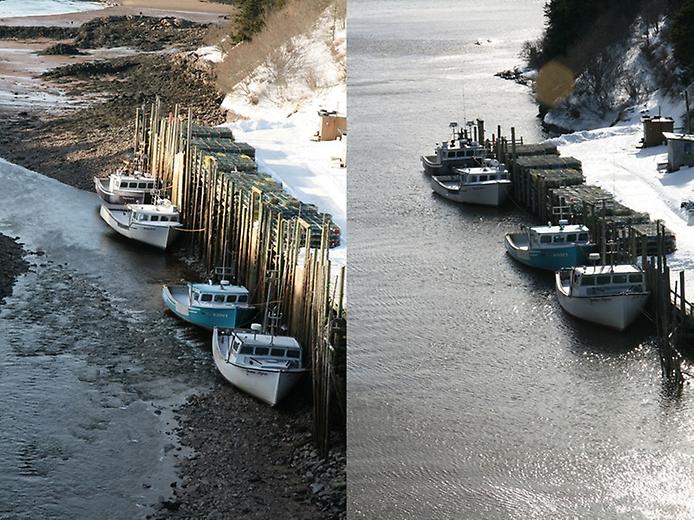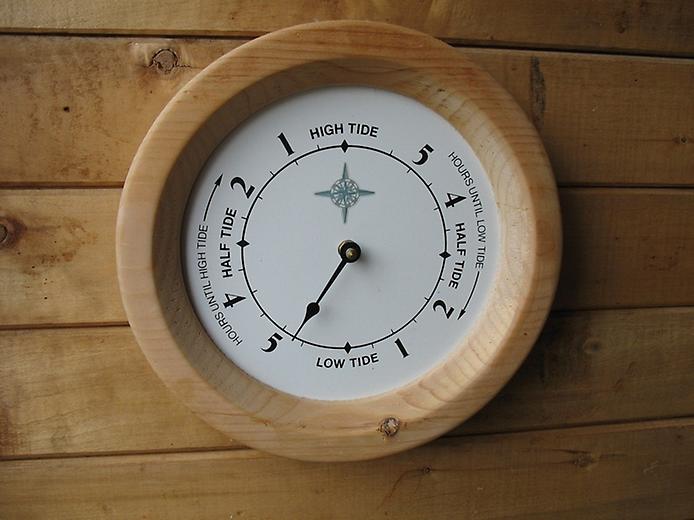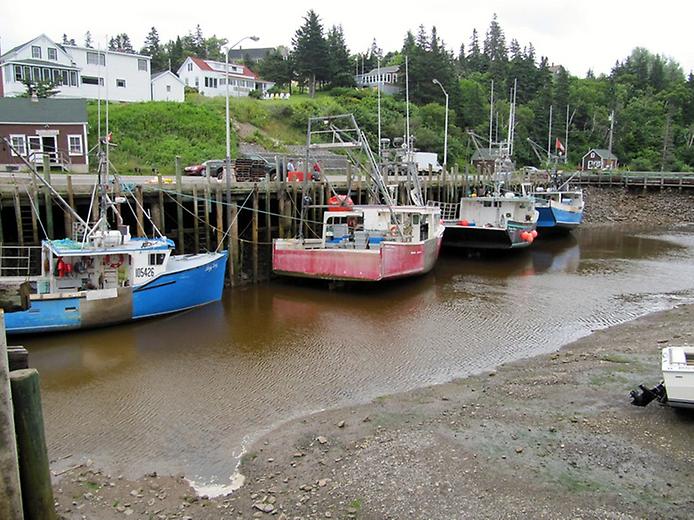The Bay of Fundy is located on the Atlantic coast of North America, in the northeastern part of the Gulf of Maine, between the Canadian regions of Kew Brunswick and Nova Scotia. This bay is known for having the highest tides in the world. Due to the unique shape of the bay, the difference in water levels between high and low tide can be as much as 14 meters. During each cycle, over 100 billion tons of seawater flows out and into the Bay of Fundy, more than the combined flow of all the world's freshwater rivers. There was one high tide and one low tide every day. It takes 6 hours and 13 minutes for low tide to turn into high tide, and 6 hours and 13 minutes for the water level to drop from high tide to low tide. This frequency gives every visitor a unique chance to see both high and low tide during the day, at any time of the year.
This unique ecosystem lifts nutrients from the ocean floor, providing an abundance of nutrients for fish, birds, whales and other ocean life. The economy of the Fundy region is based on this. Powerful currents have created amazing cliffs on the shores of the bay, exposing fossils that were formed more than 300 million years ago. 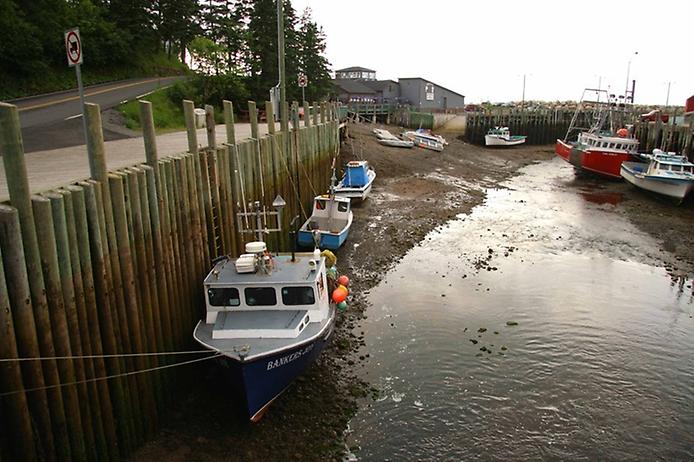
Why are the tides of the Bay of Fundy the highest?
The average range of fluctuations in the world's oceans is a maximum of 1 meter, so how can a difference of up to 16 meters occur in this bay? Everything is explained by the special shape of the coast in these places and very large volumes of water.
The water in the Fundy basin has a characteristic oscillation period, when the fluid set in motion will rhythmically "squish" back and forth in a certain period of time. On a smaller scale, you can imagine a water bath where it takes only seconds to stir up the water and pour it overboard. In the Bay of Fundy, due to the huge depth, the natural oscillation period is approximately 12-13 hours. This fluctuation coincides in interval with the tides of the Atlantic Ocean, the streams of which rush into the bay every 12 hours and 26 minutes. Because of this unique feature, Fundy is listed as one of Canada's 10 Natural Wonders. 
Imagine a person swinging rhythmically back and forth on a swing, reaching a certain height each time. Now imagine that at a certain moment someone appears who gives him an extra boost, and together they reach a much greater height. Likewise with the tides of Fundy, the water moves back and forth in sync with ocean currents. 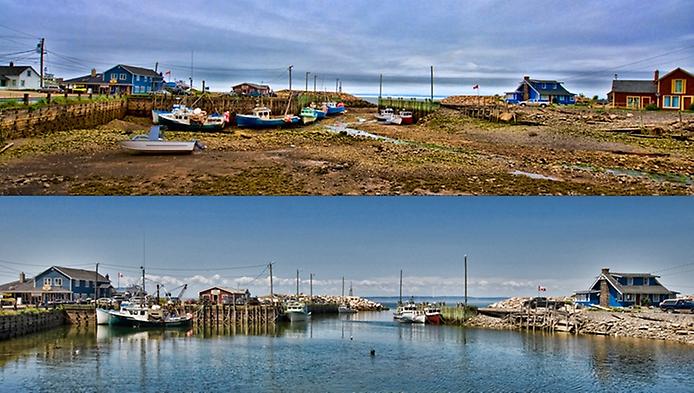
The shape of the bay has a secondary influence on the ebb and flow. It is shaped like a large natural tube, becoming smaller and narrower at the top.
At the end I will add a video where all these processes can be considered in more detail. 